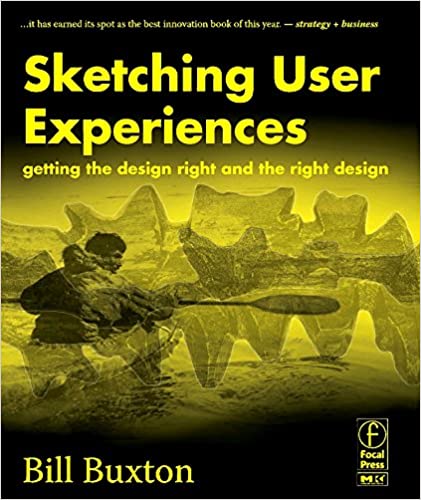Bill Buxton's "Sketching User Experiences"
September 5, 2007

I’m reading the book Sketching User Experiences by Bill Buxton. The author’s attention to the presentation of examples make for an engaging book, and he covers some interesting ground. I came across an interesting list he presents (pp. 111-2) of attributes that characterize design sketches, in which he asserts that sketches are (or have):
- Quick: A sketch is quick to make, or at least gives that impression.
- Timely: A sketch can be provided when needed.
- Inexpensive: A sketch is cheap. Cost must not inhibit the ability to explore a concept, especially early in the design process.
- Disposable: If you can’t afford to throw it away when done, it is probably not a sketch. The investment with a sketch is in the concept, not the execution. By the way, this doesn’t mean that they have no value, or that you always dispose of them. Rather, their value largely depends on their disposability.
- Plentiful: Sketches tend not to exist in isolation. Their meaning or relevance is generally in the context of a collection or series, not as an isolated rendering.
- Clear vocabulary: The style in which a sketch is rendered follows certain conventions that distinguish it from other types of renderings. The style, or form, signals that it is a sketch. The way that lines extend through endpoints is an example of such a convention, or style.
- Distinct gesture: There is a fluidity to sketches that gives them a sense of openness and freedom. They are not tight and precise, in the sense that an engineering drawing would be, for example.
- Minimal detail: Include only what is required to render the intended purpose or concept. Lawson (1997, p. 242) puts it this way, "… it is usually helpful if the drawing does not show or suggest answers to questions which are not being asked at the time." Superfluous detail is almost always distracting, at best, no matter how attractive or well rendered. Going beyond "good enough" is a negative, not a positive.
- Appropriate degree of refinement: By its resolution or style, a sketch should not suggest a level of refinement beyond that of the project being depicted. As Lawson expresses it: "… it seems helpful if the drawing suggests only a level of precision which corresponds to the level of certainty in the designer’s mind at the time."
- Suggest and explore rather than confirm: More on this later, but sketches don’t "tell", they "suggest". Their value lies not in the artifact of the sketch itself, but in its ability to provide a catalyst to the desired and appropriate behaviours, conversations, and interactions.
- Ambiguity: Sketches are intentionally ambiguous, and much of their value derives from their being able to be interpreted in different ways, and new relationships seen within them, even by the person who drew them.
Point #9 above states that sketches should exhibit an appropriate degree of refinement, a point echoed in a post I made a while back on matching design sketches to the desired level of design feedback. I found the other attributes listed here interesting food for thought.